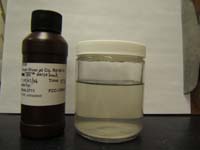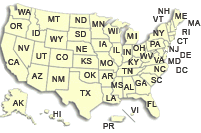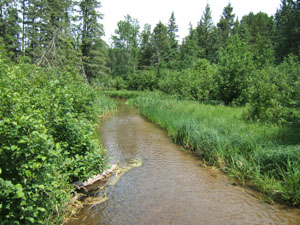
Emerging Contaminant and Endocrine Studies
Minnesota PROJECTS
USGS IN YOUR STATE
USGS Water Science Centers are located in each state.

|
Occurrence of Endocrine Active Compounds and Biological Responses in the Mississippi River
Study Design and Data, June through August 2006. By Kathy E. Lee1, Christine S. Yaeger1, Nathan D. Jahns2 , and Heiko L. Schoenfuss2.
This report was prepared in a joint effort between U.S. Geological Survey1 and St. Cloud State University2
Major Findings in the study include:
- Endocrine-active compounds are a class of chemicals that interfere with the natural regulation of endocrine systems, and they have been identified in surface waters worldwide. An understanding of their distribution in aquatic systems is important so that aquatic organism exposure can be evaluated.
- The U.S. Geological Survey, Minnesota Pollution Control Agency and St. Cloud State University collected water, bed sediment, and fish at 43 sites along the river from headwaters at Lake Itasca to 14 miles downstream from Brownsville, Minnesota during June to August 2006 as part of an integrated biological and chemical study of endocrine active compounds and endocrine disruption in fish in the Mississippi River.
- Endocrine active compounds and household, industrial, or agricultural wastewater indicator compounds were detected in water and bottom sediment samples from the Mississippi River. compounds were detected in bottom sediment samples (ranged from 3 to 31) than in water samples (ranged from 0 to 9).
- Cholesterol, atrazine, N,N-diethyl-meta-toluamide (DEET) metolachlor, and hexahydrohexamethylcyclopentabenzopyran (HHCB) detected most frequently in water samples.
- Indole, beta-sitosterol, cholesterol, beta-stigmastanol, 3-methyl-1H-indole, p-cresol, pyrene, phenol, fluoranthene, and 3-beta coprostanol, benzo[a]pyrene, acetophenone, and 2,6-dimethylnaphthalene were the most frequently detected in bottom sediment samples. The compounds NP1EO, NP2EO, and 4-nonylphenol were detected in greater than 10 percent of the bottom sediment samples.
|


